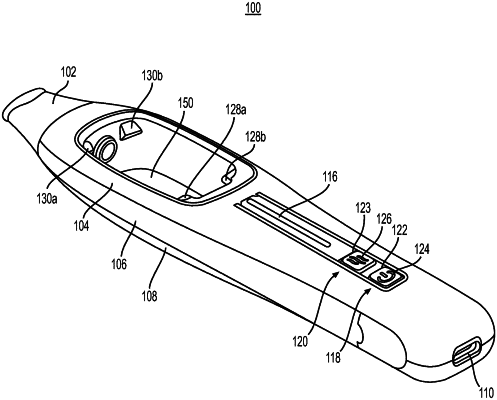| CPC A24F 40/51 (2020.01) [A24F 40/44 (2020.01); A24F 40/46 (2020.01); A24F 40/57 (2020.01); A61M 11/042 (2014.02); G01K 13/00 (2013.01); G01P 5/02 (2013.01); A61M 2205/3334 (2013.01); A61M 2205/3368 (2013.01)] | 20 Claims |

|
1. A method of controlling a hot wire anemometer (HWA) of a non-nicotine e-vaping device, the method comprising:
controlling, by a first proportional-integral-derivative (PID) controller, a level of power applied by the non-nicotine e-vaping device to the HWA based on a temperature of a heated element of the HWA and a temperature setpoint;
generating a puff detection signal indicating whether or not a puff is currently occurring with respect to the non-nicotine e-vaping device, the puff detection signal having a first logical value when the puff is occurring and a second logical value when the puff is not occurring, and the temperature setpoint being fixed while the puff detection signal has the first logical value indicating that the puff is currently occurring with respect to the non-nicotine e-vaping device; and
while the puff detection signal has the second logical value indicating that the puff is not currently occurring with respect to the non-nicotine e-vaping device,
detecting, by a second PID controller, a change in an ambient temperature of the HWA; and
controlling, by the second PID controller, the temperature setpoint such that the temperature setpoint is adjusted in response to the detected change in the ambient temperature of the HWA.
|